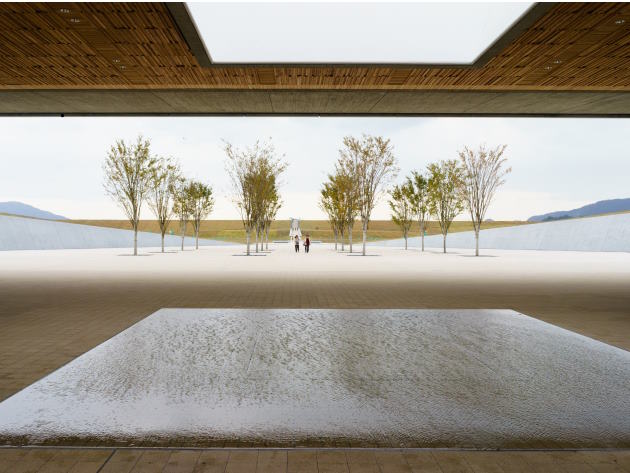
Promoted by Roma Culture, Sovrintendenza Capitolina ai Beni Culturali, the exhibition is the result of a reportage carried out by Enrico Graziani, a particle physicist by profession and photographer by passion, in northeastern Japan and in particular in the Tohoku region, which was hit exactly 12 years ago (on 11 March 2011) by a very violent earthquake and tsunami that profoundly changed the human and natural landscape of the area.
Today, however, there is another factor that threatens to further change the landscape, perhaps irreversibly. Colossal sums have indeed been invested in the construction along the coast of massive protective walls, called bōchōtei in Japanese. While effective in safeguarding commercial activities, harbors, infrastructure and establishments, the walls result in the destruction of beaches and wetlands, harming tourism and giving local people a sense of confinement and detachment from the sea.
The forty-two photographs of various formats that make up the exhibition, taken mainly in and around the towns of Kesennuma and Rikuzen Takata, invite us to reflect on this condition and the short- and long-term consequences of such a large-scale anthropogenic intervention. One part of the exhibition is devoted to the architectural and social impact of the looming bōchōtei on people’s lives; another section illustrates the work activities to which the resident population is devoted, centered almost entirely on fishing and fish processing; and finally, a series of photographs regard the daily lives of townspeople who experienced a dramatic time zero and then bravely started over from scratch.
Informations
Dall'11 marzo al 14 maggio 2023 - prorogata al 18 giugno 2023
Dal martedì alla domenica ore 9.00-14.00
Ultimo ingresso mezz'ora prima della chiusura
Giorni di chiusura
Lunedì
CONSULTA SEMPRE LA PAGINA AVVISI prima di programmare la tua visita al museo
 Condividi
Condividi











































